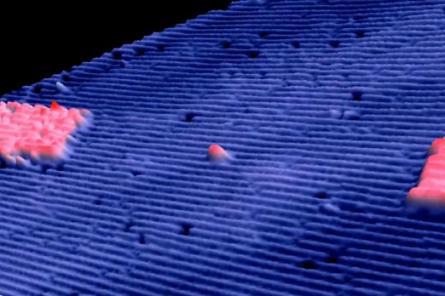
A single atom transistor, which could be used in quantum computers in the future
It will be 20 years before quantum computers capable of modelling and simulating complex biological and chemical systems to create new materials will become commercially available, a scientist at the University of New South Wales (UNSW) has predicted.
Speaking to CIO Andrew Dzurak, a Scientia Professor in Nanoelectronics at UNSW, believes the turning point will be “when quantum computers can start doing things that existing computers can’t.”
“Fully working quantum computers with small bits have already been demonstrated. The issue is when will a quantum computer be able to solve problems that currently cannot be solved with all of the world’s existing computers,” said Dzurak.
Dzurak presented UNSW’s recent work on developing quantum bits to attendees at the 20th Australian Institute of Physics Congress, held at the university earlier this week. In September, UNSW research announced that it had created the world’s first working quantum bit based on a single atom in silicon.
“I don’t believe that in 10 years there will be commercial systems that will [allow us] to start modelling drugs in a convenient way [for example],” said Dzurak.
“I think that within ten years, there will be demonstrations of modelling of certain chemicals and drugs that couldn’t be done today but I don’t think there will be a convenient, routine [system] that [people] can use. To move to that stage will take another decade further beyond that.”
According to Dzurak, quantum computers “won’t be able to do everything better.”
“Quantum computers, based on existing theories that are being developed around them, outperform various existing computers in a number of tasks but not all tasks,” he said.
“A lot of the more mundane computing tasks – such as operating mobile phones or word processing – [they’re] not complex tasks so you really don’t get much benefit out of having a complex computer doing [them].”
He said that solving problems, such as modelling and simulating complex systems, is where quantum computing will have major advantages.
Silicon even more suitable than originally believed
Dzurak said that over the past two to three years, silicon has proven to be even better as a material for quantum computers than scientists had originally hoped.
Experiments in Europe and Canada have shown that “quantum bits” can stay alive in silicon for several minutes.
“Generally in semiconductors and silicon materials that are used to make computer chips, one of the problems is that electrons gets scrambled and the information can get lost,” he said.
“But it has been shown that by performing a type of “isotopic purification” on silicon, it’s possible to make it in a way where the quantum information is available for many minutes, which is quite remarkable.”
Dzurak explains that atoms can have different isotopes which correspond to the different numbers of neutrons that exist in their nucleus.
“Silicon, which is element 14 in the periodic table, it’s most common isotope is “silicon 28”, and in that there are 14 protons and 14 neutrons. There are also another two other isotopes, silicon 29 and silicon 30, which have an extra neutron and an extra two neutrons respectively,” he said.
“The reason this is important for quantum computing is that the nucleus of the silicon atoms have a “spin.” We don’t want to use that spin for our quantum computing, we want silicon that has no “spins” in it. The only spin that we put in is the deliberate atom of phosphorous, which we use as our quantum bit.
Dzurak said that natural silicon has five per cent of the atoms that have silicon 29, which is a problem because silicon 29 has a so-called “nucleus spin” where nuclei are spinning around and they interfere with the quantum bit that scientists are trying to control.
“It’s been known that you can purify and remove the silicon 29, leaving just the silicon 28 isotope, but what’s been shown in the last year is using this material, it’s possible to show that the spin coherence time (the time that the information remains) can be extended into minutes, which on the computing time scale is a lifetime.”
New devices to show big reductions in error rates
UNSW has purchased “some of the highest purity silicon 28 in the world” and is currently making new quantum bit devices.
“We are hoping that within the next 6 to 12 months, we will be able to show very, very dramatic improvements in error rates for our quantum bits,” he said. “We could be looking at a factor of thousands or more [reduction in error rates].”
“To build a large-scale quantum computer that can effectively correct its own errors, you really need error rates that are getting down to the 1 per cent level or less.
“At the moment, our accuracy on our first silicon quantum bit was only around 60 per cent and with silicon 28, we can push it up to that 99 per cent [level] to develop a fully scalable, fault tolerant [computer],” he said.
Follow Byron Connolly on Twitter: @ByronConnolly Follow CIO Australia on Twitter and Like us on Facebook… Twitter: @CIO_Australia, Facebook: CIO Australia, or take part in the CIO conversation on LinkedIn: CIO Australia
Join the CIO Australia group on LinkedIn. The group is open to CIOs, IT Directors, COOs, CTOs and senior IT managers.
